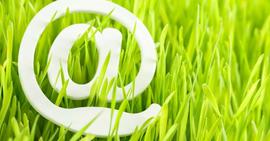What eco-friendly digital habits are easy to adopt?
To support you in your energy transition efforts, the Mission for Energy Transition will be highlighting a simple eco-action that you can adopt in your everyday life. Whether at home, at work or at school, while shopping, travelling or gardening, or even on holiday, there are eco-actions we can take in every area of our lives.
What eco-friendly digital habits are easy to adopt?
Both at work and at home, electronic devices are an integral part of our daily lives. Whether they are switched on, on standby or even off, our computers, smartphones and other electronic tools consume energy constantly, to the extent that they now account for 47% of our greenhouse gas emissions. The alert has been sounded, and the Mission for Energy Transition has some suggestions for a number of simple, eco-friendly habits that you can adopt in your everyday life to reduce your digital footprint... and help the environment!
#1 Pay attention to your email inbox.
Our email inboxes are undoubtedly the biggest rubbish bins in our homes, so don’t be shy about doing a little housekeeping! Sort your email on a regular basis: delete useless messages which are using up too much storage space and unsubscribe from those intrusive (and numerous!) newsletters. Tools like Cleanfox can help you to tidy up your inbox. However, to make sure that these actions have their full impact, don’t forget to empty your trash folder! You should also try to avoid very large emails: sending a 1 MB email with attachments is equivalent to using a 25W bulb for an hour. So reduce your impact by switching to file transfer services like WeTransfer.
#2 Reduce your impact while browsing
It’s hard to believe, but opening up a webpage and conducting a search generates seven grams of carbon dioxide. More specifically, browsing the Internet for a year emits similar CO2 emissions to those emitted by a car travelling 1,400 kilometres (Source: energuide.be). Whenever possible, enter the URL directly into the address bar, or use eco-friendly search engines like Lilo or Ecosia. You can also cut the number of pages consulted by using specific keywords or creating favourites. It’s quick, practical and, above all, eco-friendly!
#3 Reduce your use of the cloud
Security, control, mobility... But that’s not all! The cloud is undoubtedly a useful tool but it uses an enormous amount of energy and the impact on the environment of this vast digital space continues to grow. Until such time as the digital industry switches to renewable energy, opt instead to use hard disks or USB sticks for storing your documents and photos. It’s safer and – above all – less polluting!
#4 Give your electronic devices a second lease of life
According to the UN, manufacturing a computer requires “240 grams of fossil fuels, 22 kilograms of chemical products and 1.5 tonnes of water.” So the aim here is to prolong the lives of your computers and smartphones as far as possible. A quick tip: getting your electronic devices repaired or taking them to special collection points (www.eco-systeme.fr) are both easy yet extremely important actions you can take! Even better: if you want to buy a computer, opt for renewable (recyclable) and energy-efficient models. Commown and other websites allow you to make a sustainable investment by offering an economic and eco-friendly alternative to purchasing harmful new computers.
Finally, try and remember not to leave your devices in standby mode or your mobile apps open for too long – this helps to avoid wasting electricity. It’s good for you, good for your wallet and good for the environment! These are some small, everyday habits that will make all the difference!


[#YourMonaco]
— Gouvernement Monaco (@GvtMonaco) July 31, 2020
La Principauté se dote d'un nouvel outil de communication urbaine. https://t.co/5f1DsYi2No





